
I was born and grew up in India, and I’m trying to remember when I became Indian.
That is the opening line of my essay in the latest issue of Foreign Policy, a special issue devoted to India.

I was born and grew up in India, and I’m trying to remember when I became Indian.
That is the opening line of my essay in the latest issue of Foreign Policy, a special issue devoted to India.
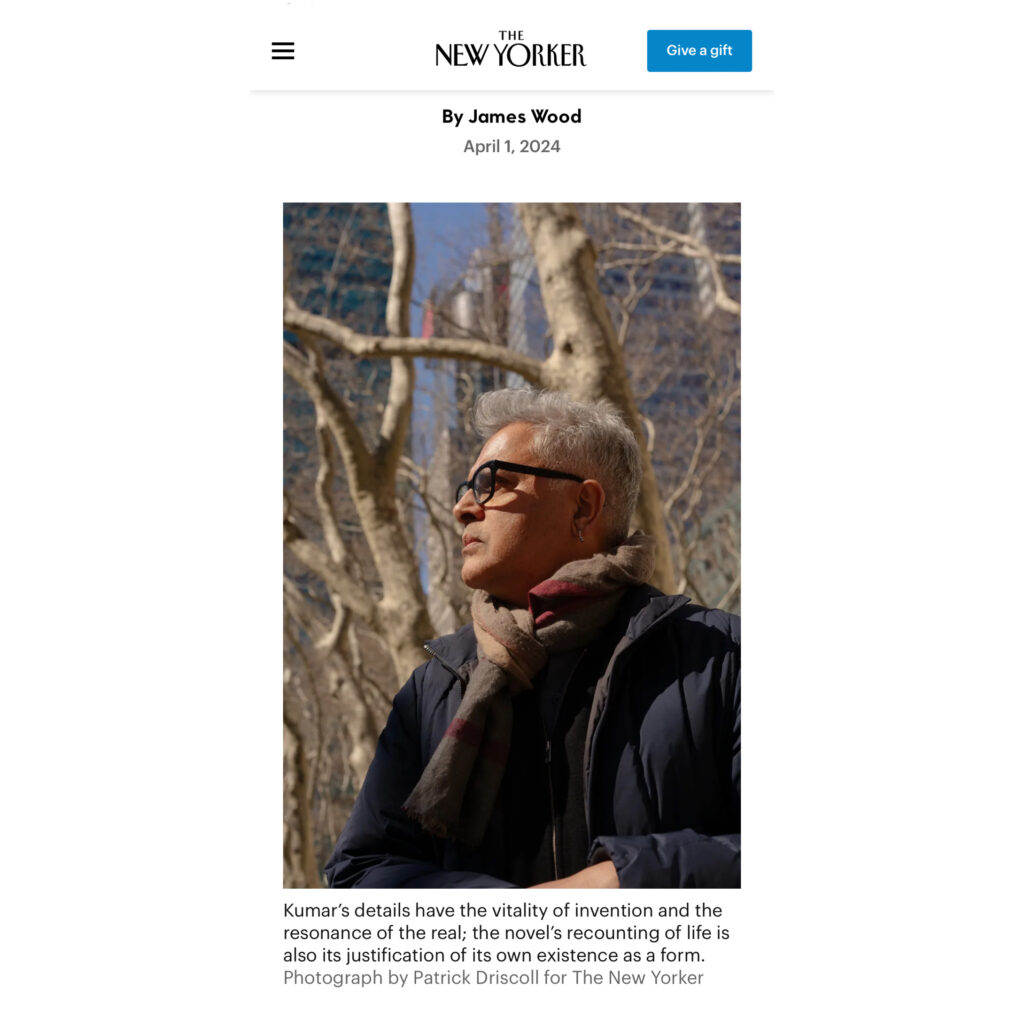
Sometimes the book you write finds the right reader. Here is the great James Wood in the New Yorker magazine lavishing generous, insightful attention on my new novel, My Beloved Life. Excerpting a few lines from the essay:
Above all, his new novel is always deeply human; the heart is everywhere in these pages. It is easily the best thing Amitava Kumar has written, largely because the novelist relaxes into the novelistic, and trusts the tale rather than the teller. Its astonishing details sit in the text like little coiled stories, pointedly revealed but not overpoweringly unpacked by the writer.
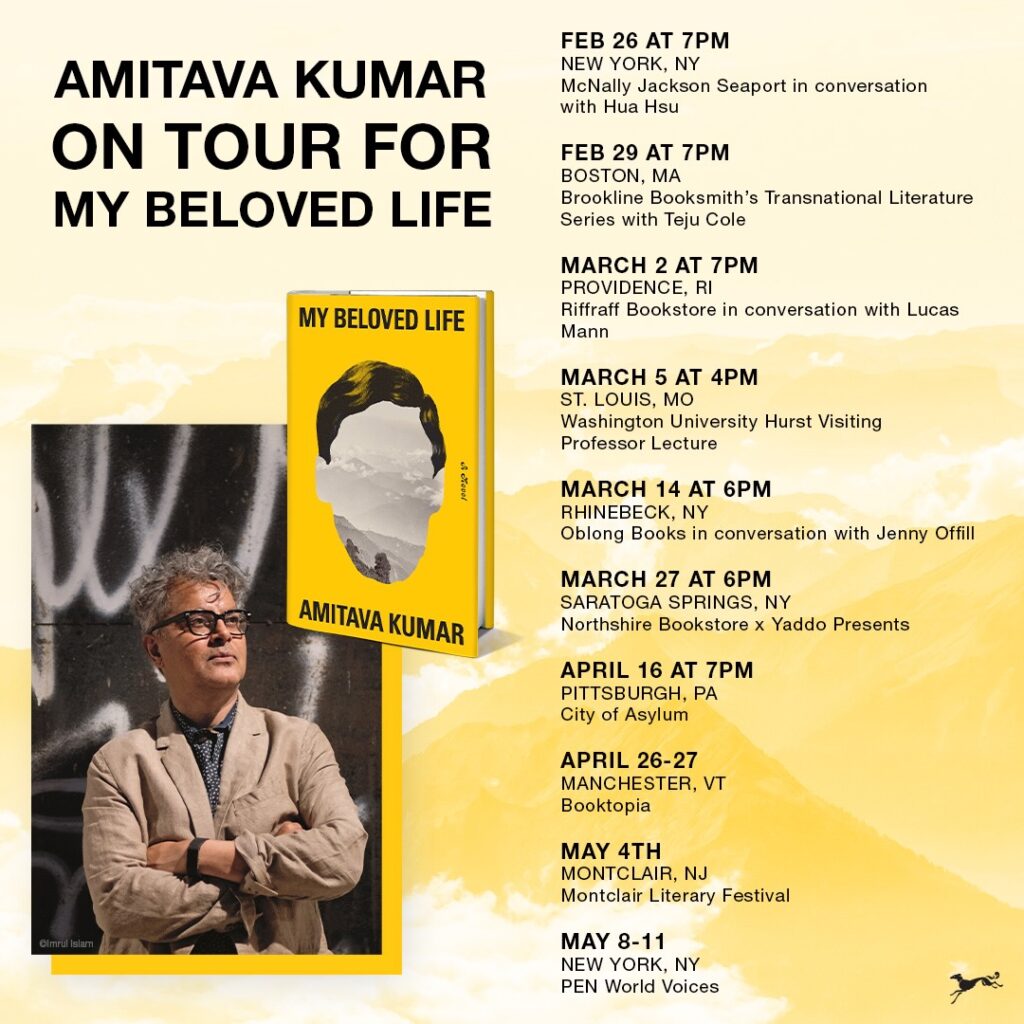
The book-buyer for the Center for Fiction posted a review calling My Beloved Life “a rare find” but what I liked most of all was the part where after quoting Jadu, one of my protagonists, who says about himself, “I am, by profession, poor,” the reviewer adds, “But Jadu is rich in love.”
During this pub. week that has just ended, I too have been rich in love.
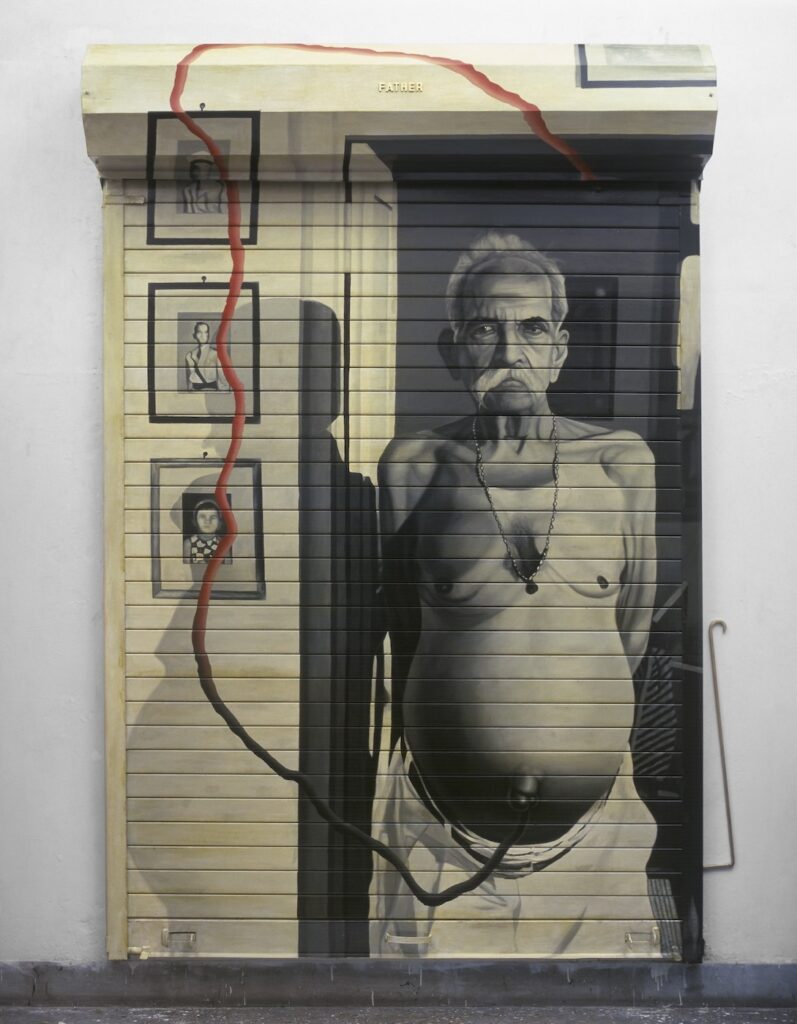
A painting titled “This is Father” by the famous Indian artist Atul Dodiya. This image had been in my mind when I was writing what became My Beloved Life. I go over this connection, and others, in a piece I wrote for Hazlitt magazine. As I say in the piece somewhere, to incorporate photographs and paintings in my fiction has always seemed to me a bit like “smuggling contraband in from the realm of the actual.” Read the whole piece here.
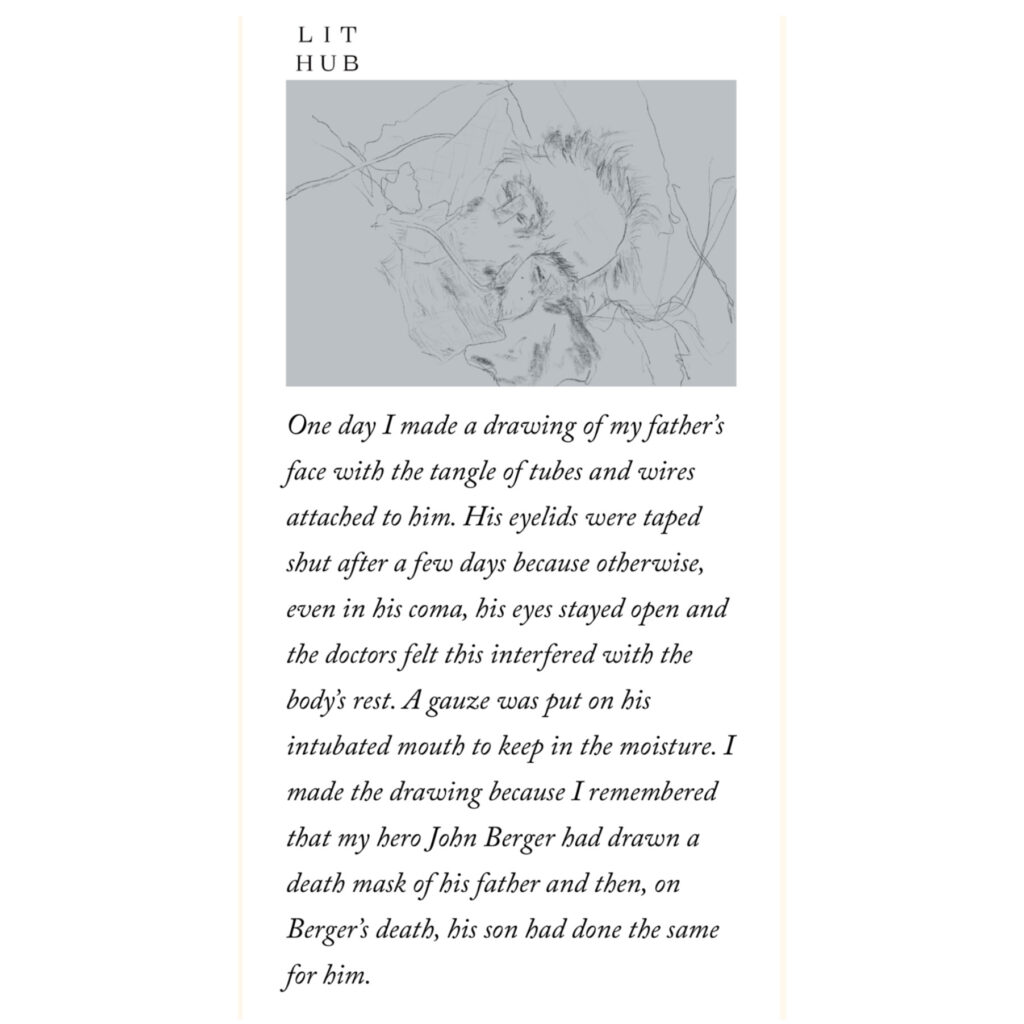
Pub. date for My Beloved Life. LitHub has put up an essay of mine on the writers I read over the past few years reporting on the death of their fathers. I found consolation in their words and I hope that you do too.
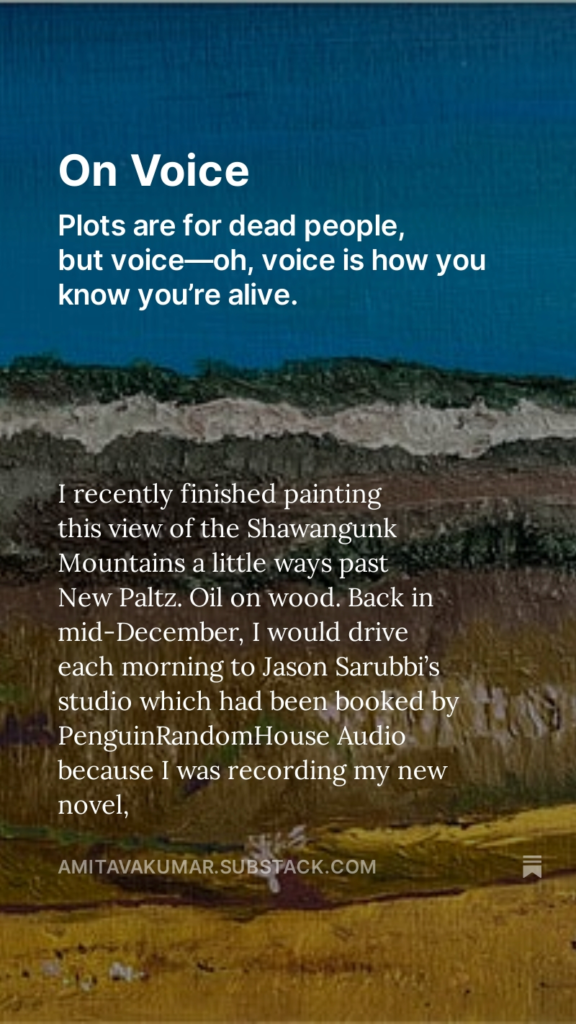
I just posted a SubStack entry on voice, flagging my Audible recording of my new novel (sample it here) as well as an essay on voice in writing.

So grateful for the two starred reviews, the one above from Kirkus Reviews, and the one below from Publishers Weekly.
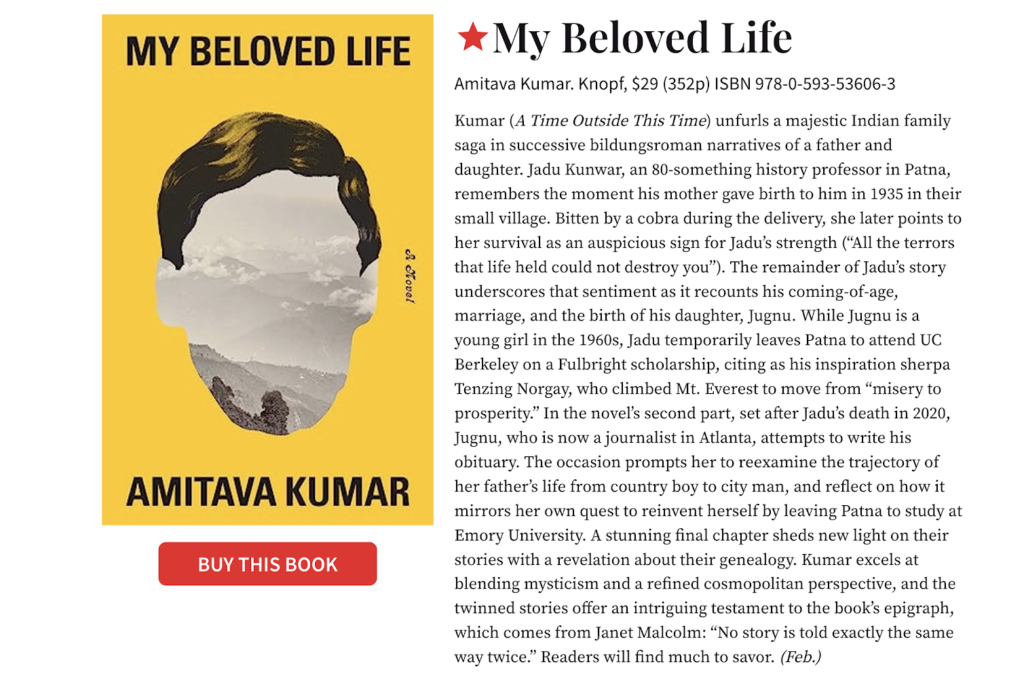
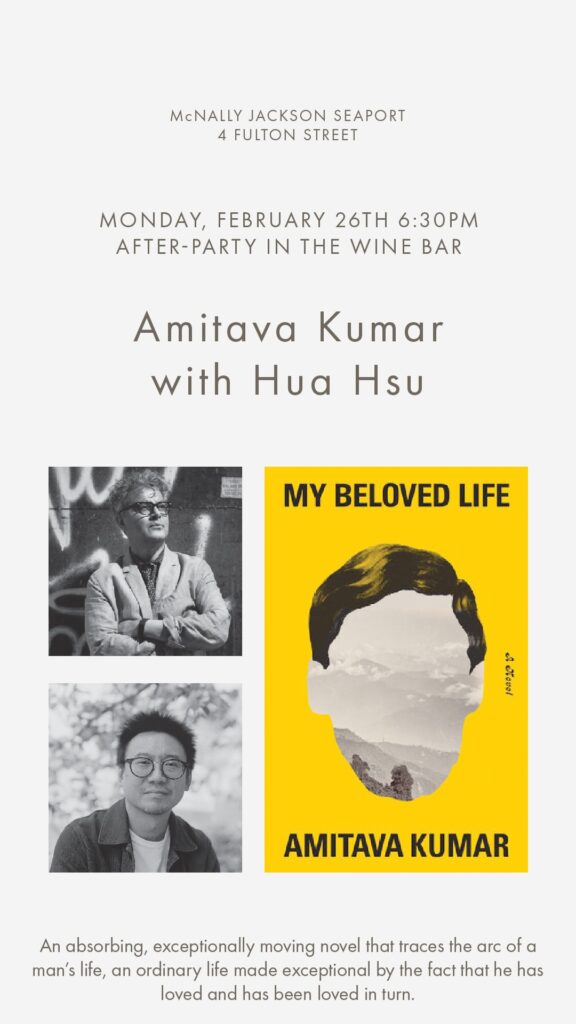
The first event for My Beloved Life is at McNally Jackson Seaport. Please RSVP here.

An interview with me has just come out in Platform Magazine. I’m posting this primarily because the author photo was taken by my former student and now international artist Caleb Stein. (It was a cold day in December, a couple of years ago, and we just went to the creek that flows behind my house. I had begun to feel the effects of the second Covid vaccine, a fever climb into me seemingly from the frozen ground underneath, introducing a chill into my bones: I appear to be standing firm but my legs were as shaky as the reflections of the leafless trees in the water behind me.) Anyway, this is an excerpt from the interview online. I hope Platform Magazine sends me the hard copy!
THE JOURNEY OF THE JOURNALS
We failed to save so many lives during the pandemic. At one point, I looked outside my window in upstate New York and saw that flowers had come up through the cover of snow. Daffodils, crocuses, tulips. I began to paint these flowers on the obituaries printed by The New York Times. I was trying to answer the question of how to keep creativity alive when there was so much death around us. My friend Hemali Sodhi from A Suitable Agency wrote to me and said that these paintings I was making belonged in a book. That is how The Blue Book came about.Time passed. Covid returned. I had taken my students for their junior semester abroad to London. We were on the street a lot and we were visiting different places, making discoveries, I told my students they would learn more, they would notice or observe more if they kept a journal and took notes and even sketched. I was trying to practice what I was preaching. The Yellow Book is a record of many travels, not just to England but also to India.
THE CRAFTING OF A NON-FICTION SEQUEL
Just the other night, I was visiting a friend’s house for dinner and I read something that answers your question. There were books everywhere in this house. My friend was making lamb chops for me and so I opened a book I saw there. It was an instructional book for artists. The Campari I was drinking has wiped out any memory of the title or the author but what I have with me now are the words I noted down in my little pocket note- book: ‘Amplification is the basic building block of all art. Find one simple idea and build on it—fast, slow, inverted, forward, splintered, whole’. This is all to say, that this process of ‘amplification’ is central to the idea of thinking about sequels.I wanted my readers to think about how we could become the authors of our own histories. And, more specifically, how this account could be an artistic one. Even during the pandemic, I had wanted my readers to be alert, not just to loss but also to visions of blazing beauty. I think my fundamental credo remains unchanged: don’t let your life pass unnoticed. One day passes, then another. A whole succession of days turns into months and years. How to mark our separate days? The places we have been. Our individual passions, our pain. Against the blurring of years, the clarity of a record. My books show a way of doing all this but they also nudge you to find your own way.
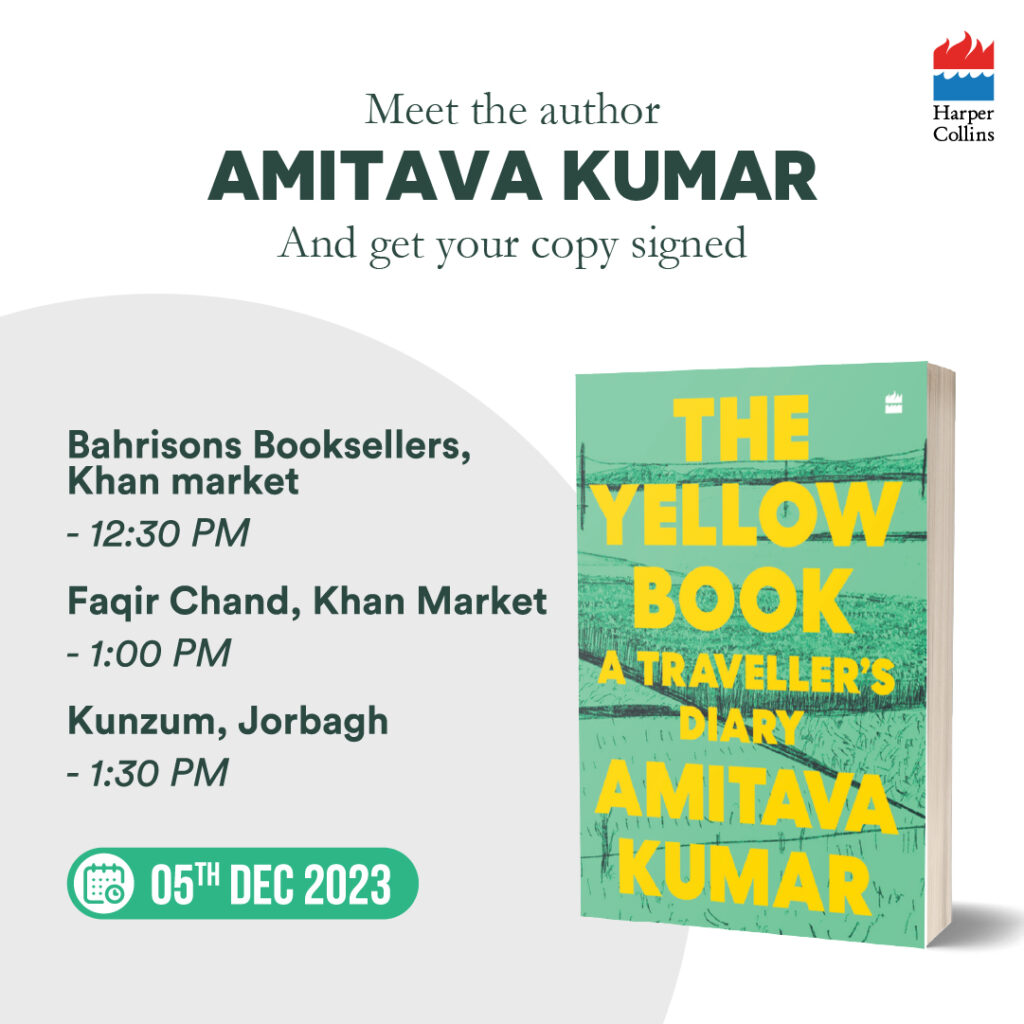
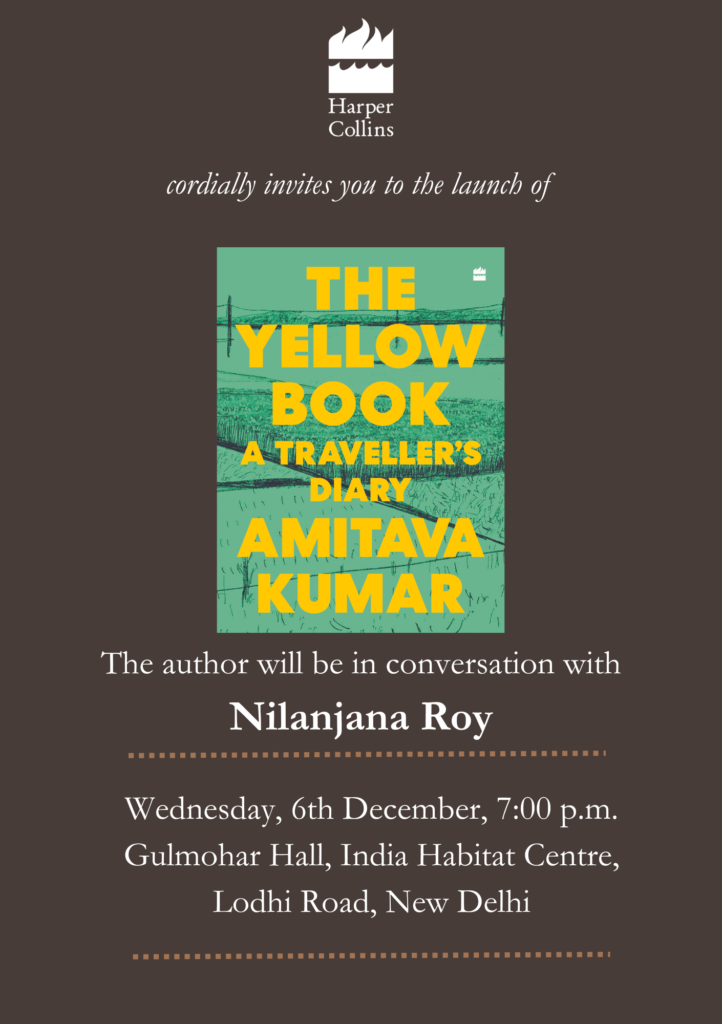
If you are coming to Dec 6 event at the India Habitat Centre, please RSVP here.
And welcome!